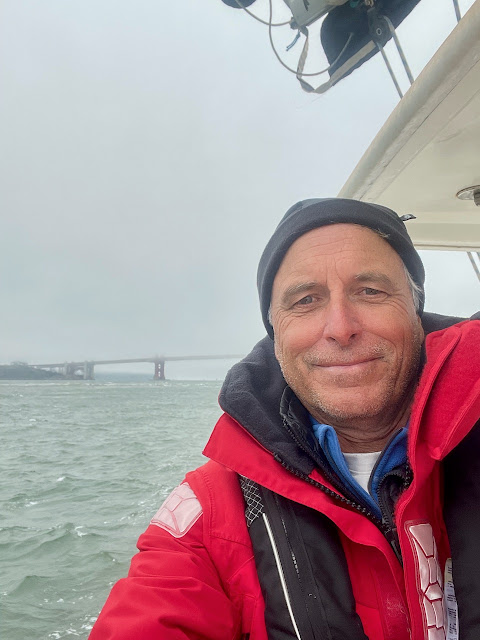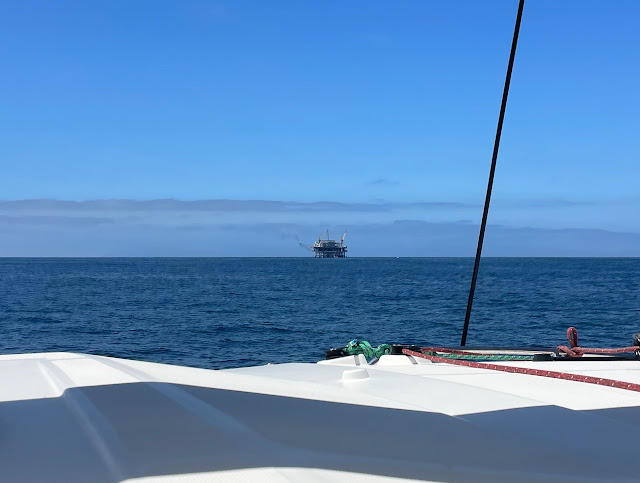Penngrove, CA
 |
| Through the Gate |
 |
Powerful feelings welled up as I entered the bay. My mind was alive with memories, as if I was watching retrospective highlights from an epic movie, a melodrama. So much has happened over the past nine years - love, birth, death, injury, illness, separation, aging, political dysfunction - all while the beauty of the ocean, coastlines and nature, of life, blessed me on my little ship, my home on the sea. I felt a deep sadness, for something special that seemed to be coming to an end, like when graduating from high school or college. A sense of accomplishment, completion, too, so more like tears of joy than of grief.
Weather was kind to me for the last passage of my bash, the wind blowing from the south and allowing me to sail all the way from Half Moon Bay. The wind was blowing hard through the foggy gate and there was a strong flood current, so Intermezzo rushed into the bay at over 10 knots and kept up that pace until we had to jibe after passing Angel Island. I was a bit concerned, the main sail being fully hoisted in 27 knots of wind, making the jibe tricky and, afterwards, wondering if I would be able to douse the sail singlehanded. But, of course, the Richmond Riviera! Angel Island blocks the wind and fog from the gate, creating a zone of calm, warm weather in its lee. I steered Intermezzo for a calm patch, the wind dropped to 8 knots, I dropped the main sail, unfurled the jib, headed downwind towards the Richmond Channel and took off my foul weather gear, down jacket and hat.
 |
| The Richmond Riviera in the lee of Angel Island |
As we passed familiar landmarks, I began to feel at home in the bay, though it also felt small and crowded after being on the ocean for so long. There's a lot of traffic to dodge and I had to remember to pay attention to which tack, port or starboard, I and other boats were on to respect sailing rules of the road.
We tied up to our slip in Marina Bay Yacht Harbor, the same slip we departed from in October 2015. It felt good to be done, but I also felt out-of-place in such an urban environment, in a giant boat parking lot. I cleaned up the boat, took a walk, ate another crappy dinner and went to bed.
Yesterday Nate picked me up on his way home from work and drove me to the Ranch. I'm off the boat after 57 straight days at sea. It is neither foggy nor cold here. Nice.
Life will be different now. It feels strange to be apart from Intermezzo and for the boat's prominence in my life to greatly diminished for some time.
 |
| Intermezzo on "Catamaran Row" in Marina Bay Yacht Harbor |

















